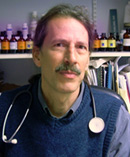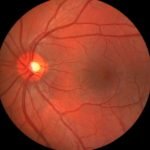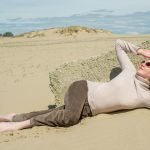Naturopathic Applications of Mild Hyperthermia
Vis Medicatrix Naturae
John H. Furlong, ND
Naturopathic medicine sits at a crossroads. As we progress through the 21st century, we have an opportunity to re-assert our unique leadership place in natural medicine. We can challenge ourselves to build on our traditions while advancing into ever more promising applications of our methods. How do we continue to expand and refine our time-tested approach? How can we maintain our relevance when other professions are realizing our practical, efficient, and scientific methods, and pushing forward to suit their niche in the alternative medicine realm? I recently had a patient describe to me a procedure they’d had performed in an ENT’s office: fiber-optic-guided pneumatic expansion of the nasal turbinates …ie, nasal specifics! We can adapt and modify our treatments and hold fast to the principles that keep naturopathy relevant and effective. As Dr Bastyr said, “the truth of our medicine will always win out, the truth of what we are doing will always survive.”
The use of external heat in healing is age-old. Virtually every continent and societal system throughout time has used thermal baths for healing and rejuvenation. With development of specific applications of these traditional methods, we can improve upon its historical benefit and raise the awareness and use of this form of nature cure. Hyperthermia is variously defined as elevation of the body-temperature to the range of 100-105 °F for achievement of medical treatment purpose. We further refine the definition to include “mild hyperthermia,” which utilizes induced temperature increases from101-103 °F.1 Hyperthermia is shown to have various physiologic effects that are of significant benefit to the aims of naturopathic treatment. Kellog referred to a multitude of physiologic changes associated with fever or application of heating methods.2 Modern research of such methods highlights enhancement of peripheral circulation and endothelial function,3 modification of growth hormone and natural killer (NK) cell function, and enhancement of anabolic and immune status.4 This is not to diminish the more traditional use of hyperthermia for assisting hepatic and systemic detoxification processes via enhanced diaphoresis and toxin discharge through the sweat. Unfortunately, there are many instances where that type of enhanced detoxification may be needed.5
Incorporation of mild hyperthermia as a standard therapy in naturopathic practice has great potential to amplify the benefits of our other methods. Mild hyperthermia has a wide range of applications in clinical syndromes and disease processes. Hannuksela provides an excellent review of the medical aspects of traditional dry sauna bathing.6 One can offer the therapy as part of an overall healing regimen or as a stand-alone detoxification program. In proposing it as a course of treatment for patients, concerns about the heat and “stress on the heart” frequently arise. We may avail ourselves of a large body of literature investigating this concern. To summarize some of the more salient points, mild hyperthermia is shown to be very well tolerated by patients having a variety of cardiovascular conditions, from those with hypertension and arrhythmias, to those recovering from coronary bypass surgery, and even those with chronic heart failure.7,8 So, we can confidently state that with care and attention, mild hyperthermia is safe and extremely well-tolerated.
To begin a series of treatments, I generally recommend an initial evaluation including BP, cardiac and circulatory evaluation, and standard chemistry screens to assess electrolyte balance and renal function (especially creatinine). Obtaining urine pH and specific gravity is of additional interest, ideally before and after each session. I explain the heating principle of hydrotherapy to the patient, highlighting the slow, steady heating phase followed by a rapidly-rising body temperature (superheating phase), in which we gain benefit but must be vigilant, due to individual tolerances. I monitor oral temperature upon entering the steam chamber, as well as the point at which the person reaches their thermal tolerance point for the session. I emphasize that it is not a contest to achieve a certain temperature or duration, but that each session is a unique experience and, thus, it is important not to overdo. It is essential that persons enter each session being well-hydrated and having had an adequate, but not excessive, meal 2-3 hours prior to the hyperthermia. Syncope can result from mild hyperthermia, even of short duration, with this disconcerting response sometimes presenting quite suddenly. It is made more likely by hypotension or lack of adequate nourishment prior to the treatment. While there are cultural and personal preferences for each type of external heating source, I use a steam sauna as a practical adaptation of the traditional sweat lodge. This method is time-efficient, rapidly induces diaphoresis, and does not involve electrically-generated waveforms…just heated water vapor.
Development of Technique and Procedure
We can now explore the rationale and practical aspects to expand the use of in-office steam or infrared sauna systems to enhance the vis medicatrix naturae. A particularly rewarding aspect of mild hyperthermia application is the ease with which this therapy coordinates with hands-on therapies such as massage therapy/shiatsu, or musculoskeletal reintegrative techniques. I find that a series of treatments over a 4-week timeframe provides a strong impetus to effective changes. The treatments incite deep muscular relaxation and a cytokine shift, fruitful in shifting patterns of inflammation and generalized discomfort. One can proceed with mild hyperthermia treatments, knowing that a number of physiologic systems will be strongly affected. The skin is a tissue that shows great response since peripheral circulation is markedly increased with sauna-therapies. Common skin conditions (eg, eczema, psoriasis) are thus amenable to this type of treatment. Beyond this, the applications of the technique are really limited only by the thoughtfulness of the practitioner and the clinical indications presented by the patient.
Applications in Naturopathic Oncology
One setting in which to consider initiation of mild hyperthermia is the care of patients undergoing treatment for malignancies. When combined with radiotherapy and/or chemotherapy, the benefits of hyperthermia are profound. Indeed, there is a Renaissance of this technique currently in Europe, particularly in Germany. The current clinical research of this phenomenon is compelling, leading one author to point out:
“Hyperthermia added to radiotherapy or chemotherapy results in up to a doubling of complete response rate… If a drug were to achieve similar successes, its corporate sponsor would have announced it as a new breakthrough in cancer treatment…”
(van der Zee J, 2002)9
The excellent response to hyperthermia is due to the well-known attribute of cancer cells being more susceptible to heat stress:
“Hyperthermia is an ideal complementary therapy to radiation. Cancer cells most resistant to radiation are precisely those most sensitive to heat. Cells that are resistant to radiation include those that are hypoxic, at low pH, nutritionally deprived or in S phase of the cell cycle. All of these characteristics make cells particularly sensitive to heat.”
(Hurwitz MD, 2010)10
The temperatures used in clinical studies are typically higher than those safely accomplished in the office via infrared radiation or steam sauna, but with a combination of directed natural product therapy and the hyperthermia, we may achieve significant benefits in our cancer patients. We must avail ourselves of the abundance of research regarding the effects of natural products on immunity and apoptosis, and recognize the power of these agents.11, 12 In combination with the indicated chemotherapy and radiation treatments, we can design supportive regimens for patients that are individualized and effective. Such a regimen might be initiated with phytomedicine via mushroom polysaccharides,13 and modification of clinical response with curcumin 14 and other flavonoid compounds such as quercetin.15 I typically use large loading doses of quercetin on the day before and the day of the hyperthermia to take advantage of the additive effects of the temperature elevation with quercetin’s cytoxic effects.16 My experience with this particular strategy in oncology patients is encouraging, almost always observing stabilization of their condition. My expectation has become one of extended, progression-free survival and I’ve been privileged to see a number of free-of-disease responses 5+ years out from initial treatment. Patients generally feel well with such a regimen, knowing that they are strongly marshalling their immune forces with an approach that is not solely dependent on taking handfuls of “pills.” A number of them have purchased steam cabinets to use at home and show great resolve in pursuing the treatment regularly through their weeks of treatment.
Case Study 1
MH is a 40-year-old woman who was diagnosed with breast cancer in late 2004. She had been working nights for a number of years and had a large amount of stress, on multiple levels, preceding the diagnosis. Histopathology showed a Grade III ductal carcinoma, nuclear grade 2, mitotic count 8/10 HPF, with lobular extension. The cells tested (+) for ER and (+) for PR, but (-) for Neu-Her2. She had had a mastectomy and begun chemotherapy, which included doxorubicin and docetaxel, along with pegfilgrastim to help maintain WBC counts. Halfway through the standard therapy, she sought naturopathic support and we began treating with mild hyperthermia and a multi-faceted support regimen:
- Melatonin, 20 mg at bedtime
- Four to six 6-oz glasses of juice (1/3 carrot, 1/3 beet root, 1/3 celery) per day
- Green tea, 3 to 4 cups per day
- Mushroom extract consisting of equal parts Grifola frondosa, Ganoderma lucidum, and Lentinus edodes, 3 capsules BID (total of 3600 mg/day)
- Blend of omega-3 oils/cod liver oil, 2 tsp per day; and severely limited intake of omega-6 sources
- Essiac tea (Rumex acetosella, Arctium lappa, Ulmus fulva, Rheum officinale), 2 oz BID on an empty stomach
MH received 14 mild hyperthermia treatments over the next 18 months, with a maximum oral temperature attained of 100.8 °F. She was instructed to take quercetin, 500 mg TID, on the day before and the day of the hyperthermia, to increase sensitization of the abnormal cells. We strove to schedule this therapy within 2 days of her chemotherapy doses, in order to gain the most benefit. She tolerated the hyperthermia well, although on one occasion, which followed chemotherapy the previous day, she had a syncopal incident requiring assistance to exit the steam closet. We made the following adjustments to her regimen according to her allopathic treatments.
- As doxorubicin can be cardiotoxic, we included Q10, 100 mg BID, to mitigate the potential for myocardial damage without impacting efficacy of the chemotherapy.
- When she began to have symptoms of neuropathy using the docetaxel, we started acetyl L-carnitine, 500 mg TID. This was continued until 6 weeks after the treatment ended, with only minimal neuropathic symptoms experienced.
- When she began her radiotherapy, we added chlorella, 200 mg TID, to help mitigate collateral damage and enhance normal cell regeneration.
She had an initial “circulating tumor cell” (CTC) test, which showed an elevated level of “15” (normal <5). Sequential testing showed a decrease of CTCs to a normal of “1” when tested 4 months later, then a “3” when tested 2 years after that, and “0” in 2008 and 2010. Now, almost 10 years out from her original diagnosis, she is well, participating in her chosen activities and with no further indications of neoplasm.
Case Study 2
SS is a 51-year-old female who sought out alternative treatment for a persistent set of symptoms (migrating joint pain, fatigue, intermittent headaches, and cognitive difficulties) after contracting Lyme disease 3 years prior. She had been treated with the standard course of doxycycline (100 mg BID X 14-21 days), but felt like she never quite regained her previous level of vitality and found herself with difficult cognitive function, recurrent joint pain, and generalized fatigue and headaches.
We began a series of 8 mild hyperthermia treatments along with phytotherapy, to encourage recovery from persistent Borrelia symptoms. This consisted of equal parts Andrographis paniculata and Polygonum multiflorum, 1.5 grams BID; resveratrol, 120 mg BID; and Uncaria tomentosa extract, 1350 mg BID. She gradually worked up to 4 grams BID of the Andrographis/Polygonum blend. She tolerated the mild hyperthermia very well, on one occasion achieving a maximum temperature of 104.3 °F without ill effects, and averaging 103.2 °F over the course of her 8 treatments. These 4 treatments were given over a 5-week timeframe, then a 4-month interim during which time we used a detoxification formula along with chlorella, vegetable juicing and a renal-lymphatic tonic of Solidago canadensis / Lespedeza capitata / Galium aparine, as a 3:2:1 mixture. She then pursued a second course of 4 hyperthermia treatments.
SS has regained her sharp mind, quite noticeably at work where it was becoming a problem. Her energy has returned and the joint pain is essentially gone, with only occasional flare-ups of elbow pain after exercise. She continues a much more satisfying life, having completed this vigorous regimen with us.
Case Study 3
TB is a 71-year-old woman with metastatic lung cancer. She had been given a somewhat dire prognosis, with 9-12 months to live at the time I first saw her 2 years ago. She has some difficulty maintaining her treatment regimen of essiac tea; melatonin, 20 mg at night; curcumin, 500 mg TID; and mushroom extracts and juicing, as in Case #1 above. She also takes quercetin (500 mg TID) the day before and the day of hyperthermia. After a number of sessions at my office, in which she tolerated the heat well, she took a liking to the hyperthermia and purchased a unit for herself to use at home.
She reports having her temperature rise to approximately 102 °F during nearly every treatment, which averages once every 2 weeks. She has followed chemotherapy treatment along with our treatments, with some agents appearing to be moderately effective and well tolerated, and other agents making her ill enough that she chose to discontinue the treatment. As of this time, TB’s cancer is stable via CT; some of the lesions are regressing and some are slowly increasing in size. She has a cough but has maintained her body weight and shows no sign of cachexia. She has an active schedule and continues to visit with her family and get out and about.
These cases perhaps illustrate benefits due to the mild hyperthermia, in combination with targeted therapy, and in concert with chemotherapy /radiation. While impossible to determine exactly the impact that the hyperthermia exerted in these cases, due to the multitude of agents used, the patients’ excellent response to treatment is somewhat unusual and, particularly in the case of lung cancer, a “lack of progression” is a very positive sign at this point, given the prognosis. I urge my colleagues to consider this type of therapy in many of their patients. While it can be time-consuming and requires close attention, the potential rewards are many.
Conclusions
Modern naturopathic medicine has proven methods which modify and enhance the healing response. Mild hyperthermia is shown to modulate immune function and apoptosis,17 profoundly influence the cardiovascular system, and enhance the response to chemotherapeutic agents and radiotherapy.18 With the methods outlined above, we have available to us a model of therapy that provides a uniquely naturopathic system to optimize the treatment of neoplasia. These are tools consistent with our heritage. We can thus empower cancer patients with options that often lead to enhanced clinical response and improved prognosis. Augmented mild hyperthermia is an approach whose time has come.
I take this opportunity to thank Dr Ed Madison, Dr Bill Mitchell, and Dr Joe Pizzorno for instilling in me their passion and commitment to naturopathic medicine. I am honored to have been the recipient of their teaching and the carrying-forward of Dr Bastyr’s legacy. I also thank Dr Russell Jaffe for giving free rein to my curiosity and instigating its growth, and to my father, a WWII medic and a compassionate, skilled doc! JHF
 John H. Furlong, ND continues his 25-year practice of naturopathic medicine in Mansfield, CT. Bringing together aspects of nature cure, phytotherapy, and a tradition of the healing aspects of the Temazkal, Dr Furlong has been using mild hyperthermia in practice for 15 years. A 1985 graduate of Bastyr University, he is currently a clinical adjunct professor with the University of Bridgeport naturopathic program, and occasionally wanders about collecting medicine. Dr Furlong can be contacted at: [email protected].
John H. Furlong, ND continues his 25-year practice of naturopathic medicine in Mansfield, CT. Bringing together aspects of nature cure, phytotherapy, and a tradition of the healing aspects of the Temazkal, Dr Furlong has been using mild hyperthermia in practice for 15 years. A 1985 graduate of Bastyr University, he is currently a clinical adjunct professor with the University of Bridgeport naturopathic program, and occasionally wanders about collecting medicine. Dr Furlong can be contacted at: [email protected].
References
- Tarner IH, Müller-Ladner U, Uhlemann C, Lange U. The effect of mild whole-body hyperthermia on systemic levels of TNF-alpha, IL-1beta, and IL-6 in patients with ankylosing spondylitis. Clin Rheumatol. 2009;28(4):397-402.
- Kellog JH. Rational Hydrotherapy. 2nd ed. Philadelphia, PA: F.A. Davis Co;1903:141-160.
- Ohori T, Nozawa T, Ihori H, et al. Effect of repeated sauna treatment on exercise tolerance and endothelial function in patients with chronic heart failure. Am J Cardiol. 2012;109(1):100-104.
- Lackovic,V, Borecký, L, Vigas M, Rovenský J. Activation of NK cells in subjects exposed to mild hyper- or hypothermic load. J Interferon Res. 1988;8(3):393-402.
- Ross GH, Sternquist MC. Methamphetamine exposure and chronic illness in police officers: significant improvement with sauna-based detoxification therapy. Toxicol Ind Health. 2012;28(8):758-768.
- Hannuksela ML, Ellahham S. Benefits and risks of sauna bathing. Am J Med. 2001;110(2):118-126.
- Scherf HP, Meffert H, Bäumler H, et al. [Effect of a single mild infrared A hyperthermia on body temperature, heart rate, blood pressure and blood viscosity in healthy probands and patients with stage I and II arterial hypertension]. Dermatol Monatsschr. 1989;175(12):733-740.
- Kihara T, Biro S, Ikeda Y, et al. Effects of repeated sauna treatment on ventricular arrhythmias in patients with chronic heart failure. Circ J. 2004;68(12):1146-1151.
- Van der Zee J. Heating the patient, a promising approach? Ann Oncol. 2002;13(8):1173-1184.
- Hurwitz MD. Today’s thermal therapy: not your father’s hyperthermia: challenges and opportunities in application of hyperthermia for the 21st century cancer patient. Am J Clin Oncol. 2010;33(1):96-100.
- Trudel D, Labbé DP, Bairati I, et al. Green tea for ovarian cancer prevention and treatment: a systematic review of the in vitro, in vivo and epidemiological studies. Gynecol Oncol. 2012;126(3):491-498.
- Shanmugam MK, Kannaiyan R, Sethi G. Targeting cell signaling and apoptotic pathways by dietary agents: role in the prevention and treatment of cancer. Nutr Cancer. 2011;63(2):161-173.
- Komuta K, Nanba H. Effect of Maitake (Grifola frondosa) D-Fraction on the activation of NK cells in cancer patients. J Med Food. 2003;6(4):371-377.
- Strimpakos AS, Sharma RA. Curcumin: preventive and therapeutic properties in laboratory studies and clinical trials. Antioxid Redox Signal. 2008;10(3):511-545.
- Cruz-Correa M, Shoskes DA, Sanchez P, et al. Combination treatment with curcumin and quercetin of adenomas in familial adenomatous polyposis. Clin Gastroenterol Hepatol. 2006;4(8):1035-1038.
- Fujita M, Nagai M, Murata M, et al. Synergistic cytotoxic effect of quercetin and heat treatment in a lymphoid cell line (OZ) with low HSP70 expression. Leuk Res. 1997;21(2):139-145.
- Dayanc BE, Beachy SH, Ostberg JR, Repasky EA. Dissecting the role of hyperthermia in natural killer cell mediated anti-tumor responses Int J Hyperthermia. 2008;24(1):41-56.
- Issels RD. Hyperthermia adds to chemotherapy. Eur J Cancer. 2008;44(17):2546-2554.










